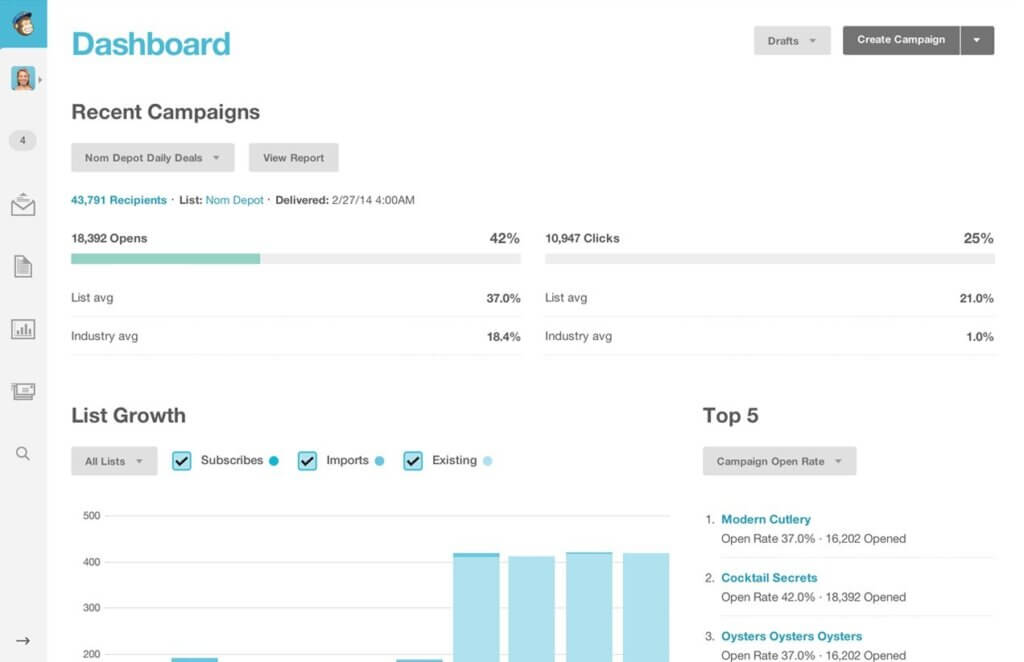How to Effectively Track Your Conversions and Sales in Email Marketing

The landscape of various marketing approaches has been evolving at a fast pace. That is natural enough, considering how digitally-oriented our society has become. However, even though social media has been vastly growing in popularity and SEO marketing has been booming, the seemingly simple approach of email campaigns has remained a steady cornerstone.
According to experts such as AeroLeads, email marketing campaigns are considered to be the most efficient way of generating a good ROI. Without a doubt, social media is no slouch in the world of marketing – it is an excellent tool to create awareness and establish your branding in the eyes of your customers.
Still, email marketing allows companies the opportunity to establish a sense of trust and build loyalty. Digital entities such as Activision, Amazon, and the acclaimed gambling game book of ra have perfected their email marketing strategies. We will tell you how you can do it too.
The Importance of Smart Email Marketing in Our Day and Age
The social media hype bubble is not quite as intense as it used to be. That is mainly because the algorithms have been changing, resulting in a vastly lowered organic reach. Surely, it has to do with giants such as Facebook understanding that it has established itself enough to start charging ever-increasing prices for ads to get good views.
Email marketing can not be jeopardized by such factors, which is something to be cherished. Sometimes the tried and true simply works, compared to the flashy new approaches. The average click-through rate of email marketing is around 2.5% as compared to a 0.07% for social media marketing. The key benefit of email marketing is that it connects to people in their personal inbox which is a lot more personable than generalized social media ads. On top of that, it gives you leverage to send out a prolonged message, rather than work with a severely limited amount of text.
So how does one make the best of their email marketing techniques? Engaging content, a creative approach, and authenticity should all be top-notch, but it is not quite enough for a professional campaign.
Tracking your email marketing conversion rates is the key factor to success. It allows you to see what is working, and what is not, thereby giving you the means necessary to fill in the gaps where your strategy might be lacking. You don’t want to simply be throwing stuff at the wall and seeing what sticks. Making informed decisions based on your results is bound to give you the edge you need to take over the competition.
Creating a Solid Email Marketing Campaign with Conversion Rate Tracking
Establish an Email Marketing Funnel
The first step in successfully tracking your email marketing conversion rates is to create an email marketing funnel. It means you have to outline the journey of your customer, going from the pitch to the end sale. Ideally, the top of the funnel should be focused at generating leads. The middle has to nurture your subscribers, the bottom part converts them, and the ending part retains your customers.

Growing your mailing list is one of the most important aspects to increase your sales. How do we do that? The best way is to offer exclusive deals in exchange for becoming a subscriber. This could be something like a 15% discount, exclusive content, or entry to a competition. Following up with personalized, authentically voiced emails is the next step.
Try to avoid a middle-of-the-road approach. Instead, choose a branding strategy that allows for building genuine trust in your company. Branding relies on a few key factors. They consist of your brand’s voice as presented per copywriting, your visual identity (web design, logo), and your activity via social media.
Ideally, try to keep it unique and consistent with a clear message as to what you stand for. Distill what problems your brand is solving, then find a unique angle to present your solution. Let’s say you are selling hair products that help with strengthening hair. Why is that unique? Branding angles could be exotic and rare, natural ingredients, your approach to sustainability, your stance on social issues, or a unique position on approaching beauty and self-care.
Track Your Top-Line Conversions
A long subscriber list won’t mean much if you fail to get customers to follow up with purchases. Reaping insights from your campaigns is the name of the game here. Perform split email tests and weigh the results, then improve upon your approach.
Split email tests consist of coming up with several iterations of your ad, trying to market your position from different angles. Also, one marketing campaign could appeal to a young demographic, another to a middle-aged group. You should test subject lines, visuals, content, personalisation, etc.
Platforms such as Constant Contact and MailChimp are excellent at providing you with the tools for split tests and metrics to gain the insights on email campaign conversion rates you need. The metrics to track are general views, click-throughs, and conversions. These will let you understand at what point your campaign is successful, and where it fails. Perhaps you will manage to generate a lot of interest, but fail to convert. Then you need to work on closing the deal by methods such as lowering the price, having stronger copywriting, or a more compelling visual approach.

Analyze the Performance of Your Campaign
Implementing the right tracking tools is a vital aspect of monitoring your average email conversion rate. An approach known as Beyond the Click Tracking can analyze the specific path users take once they come to your website from the embedded link in your marketing email.
This allows you to see how users interact with your site, what content engages them most, and how much time they spend on specific sections of your page. In practical terms, it will show the exact actions that your potential customer takes after they click your ad, i.e. going to your about section, checking prices, reading descriptions and the like.
Some additional tracking methods are known as conversion points, automatic tagging, and visitor tagging. These are automatic data linking methods that allow your campaign to register specific customer actions such as conversions, app-downloads, calls, subscriptions, and more. These have to be set up in your ad campaign to be effective. The most popular platforms to collect the relevant data are Finteza and Google Analytics. Google Analytics is arguably the most straight-forward choice if you are a novice.
Set Up Tagging via Coding Solutions
To reap the most benefits of your tracking software, make sure to avail of coded tagging systems. There is no better software than Google Analytics to do this. Essentially, coding allows you to tag your website links with tracking parameters. It activates a data link system that enables Google to start collecting information once a specific link has been pressed.
Google offers a comprehensive guide on tagging your embedded links, thereby maximizing your email conversion analytics.
Understand the Behavior of Your Customers
The question of how to calculate email conversion rates is not something to skimp over, so it is best to use as many tools as possible to get accurate customer data.
A premium third-party platform like Vero can be of much aid when added on top of your other marketing tools. It goes beyond showing you email opening rates and click-throughs by additionally showing you user behavior related to specific campaigns. The results get displayed in a digestible, visually oriented manner that is easily understandable even if you are a novice to marketing.
This includes data-graphs, visual representations of click through, and conversion success. Instead of crunching numbers you will be able to evaluate your campaigns a glance.

Update Your Approach Accordingly
Once you have gathered all the data on your cold email conversion rates, you will need to focus on improving your marketing strategy as a whole. Remember that the content of your email is just as important as your marketing approach.
Split tests of sending out various iterations of your message could work to your benefit. As mentioned, these can consist of creating 3-4 email different templates that target various marketing angles. They could appeal to different demographics through different copywriting strategies, have different visuals that are inserted, or simply vary in the amount of text.
Different exclusive offers can be great for split email tests too. Try one campaign with a buy one, get one free approach, and another with a fixed percentage discount. Analyze what appeals most to your customers by weighing the conversion data, and then build on that.
We would love to know whether you use any marketing analytics platforms. How is it working for you? What are your favorites? Please leave your comments in the section below!
Author — Thomas Glare, SEO expert, applied marketing strategies to several brands.






